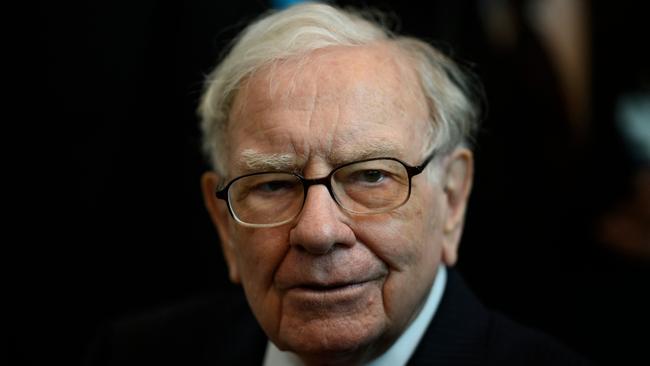Quinbrook Infrastructure to sell Lockyer Energy Project
The Australian Super-backed Quinbrook is selling a Queensland power plant and moving ahead with a string of big solar developments in the US and Britain.

One of Australia’s biggest slated battery developments has been put on the market by Quinbrook Infrastructure Partners as the Australian Super-backed renewable energy fund pushes ahead with a string of offshore projects including one of the largest solar installations in the US.
Quinbrook is selling its Lockyer Energy Project, north of Gatton in the state’s southeast, with permits in place for 1000 megawatts of generation capacity spread across a 700 megawatt battery and a potential doubling of the existing 132MW gas peaking plant.
ANZ has been hired by Quinbrook to sell the plant with a target of sealing a deal by June.
Quinbrook co-founder and managing partner David Scaysbrook told The Australian that while the 1000MW capacity was originally expected to be filled by up to six gas turbines, the focus had now shifted to a big battery project given the accelerating transition to clean energy.
“The original project was configured as a 1000MW gas turbine project and so we’ve changed it effectively to be mostly a battery storage project with a small gas peaking element,” Mr Scaysbrook said.
Big utilities are expected to consider bidding for the project, folding it into an existing portfolio of generation and retail opportunities not available to Quinbrook.
“It’s really an asset that’s more valuable to an incumbent than someone like us. We don’t have a retail business, we don’t have a gas business, we don’t have anything to insure with this asset. And so it’s more valuable to someone who’s got an existing business that they’re trying to protect or they’re trying to grow,” Mr Scaysbrook said.
“Someone’s got to make the decision how much battery, how much gas or all battery and no gas. We’re not going to make that decision because we’re not ultimately going to be the owner of the asset. So now is the right time to let the final owner come in and make that decision between battery and flexibility.”
From its inception in 2015, Quinbook has quietly grown into one of the world’s biggest investors in the fast-growing renewable energy industry with $3bn of funds under management, Australian Super among the high profile pension money which has invested in the firm and a plan to grow to $5bn of funds by the end of 2022.
The company operates a diverse set of businesses including APAC Green Data, a developer of data centre campuses across Australia’s east coast while also managing Energy Locals, a clean energy-focused electricity retailer that allows businesses to set up their own energy plan with over half the profits going to charities.
But increasingly it’s flexing its power offshore through large-scale renewable energy projects including the $US1.1bn Warren Buffett-backed facility being built near Las Vegas, boasting a huge 690MW solar installation and a 380MW battery system able to store more than 1,400 megawatt hours of solar power.
“We’ve oversized the solar project. So that during the day, we’re charging the battery, so it’s absolutely full. So it’s got four hours of solar power, fully charged during the day and the balance of the solar is sold into the grid. And enough of it goes completely into the battery. The battery has then got four hours of solar power and when the sun goes down in Las Vegas, the battery turns on,” Mr Scaysbrook said.
“It’s a really high value use of that battery and importantly the carbon footprint of the power in the battery is zero. That’s an area that Quinbrook has specialised in. It’s called renewables hybrid — teaming batteries with wind and solar so that we can shift the renewable power around when it’s needed during the day.”
Quinbrook in September also bought a 350MW solar and battery storage project in the UK’s Kent, dubbed Project Fortress, and expected to be the largest single site solar installation in Britain.
Mr Scaysbrook describes Quinbrook as a “value-add” investment manager with returns between infrastructure funds and private equity.
“Our classic return targets of 15 per cent-plus and most of the products that we develop and our performance is consistent with that. That’s where we sit, so we’re halfway between what they call core infrastructure, which might be a 8-10 per cent return, and private equity which has stayed at 20 per cent plus. We’re bang in the middle.”
Taking on construction and operation hikes risk but can deliver lucrative returns.
“That’s where we’re different because we’re industrialists and we’ve been doing this for 30 years and we’ve got hundreds of projects to our credit. We’ve made a lot of mistakes, but they haven’t killed us. So we’ve had more wins than losses.”




To join the conversation, please log in. Don't have an account? Register
Join the conversation, you are commenting as Logout